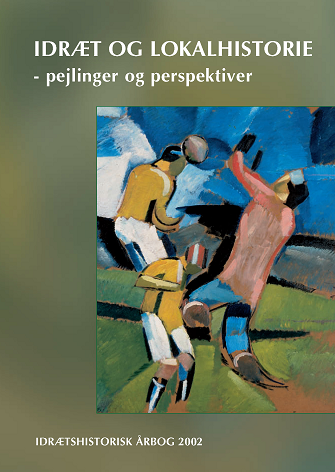Traditionel og moderne løbekultur hos kalenjin-folket i Kenya - et historisk og antropolgisk perspektiv
DOI:
https://doi.org/10.7146/ffi.v18i1.31730Resumé
Afrikanske løberes succes, om løb fra transport til elitesport.
Traditional and modern running culture of the Kalenjin people of Kenya – a historical and anthropological perspective
In the 1930’s, French anthropologist Marcel Mauss introduced body techniques as a conception. However, at that time western anthropology only dealt with body culture as such at a rather superficial level. Different body cultures were regarded as exotic and were not subject to serious analysis. Anthropologists at that time did notice the dances and movement cultures of foreign cultures, but they were merely seen as a substantiation of the primitive state of the people who were studied. The successful Kenyan runners connect different themes such as the background of their success and the historical background of the running techniques and cultures. The fact that the Kalenjin, numbering just 3.5 million, mainly has achieved the Kenyan running success has created a long lasting interest in this particular phenomenon. The Kalenjins emerged as a single ethnic group only around 1950 as a result of political and cultural opportunism in colonial Kenya. Before that time the Kalenjin people consisted of several subgroups. The ancestors of the Kalenjins were emigrants from Ethiopia (Cushites) and the Sudan (Nilotes), who left their native places between 2000 and 1000 BC, respectively, as well as hunter-gatherers already living in present-day Kenya. When the British officially colonised Kenya in 1895, the dominating culture of the Kalenjin societies had its primary roots in traditional Nilotic culture. The Kalenjin peoples of pre-colonial Kenya were ardent cattle thieves. Cattle raids were performed by young warriors, and running prowess was crucial in order to achieve success during the raids. Thus, a successful cattle thief was also an excellent runner. Also, cattle raiding was seen as an acceptable way of climbing the social and economical ladder for a young warrior. Cattle raiding continued during the colonial days in Kenya even though the colonial authorities prohibited it. For reasons such as a risk of harsh punishment and lucrative earning opportunities, cattle raiding gradually changed from being limited to a single Kalenjin sub-group to being dominated by multiethnic gangs who operated outside traditional tribal control. At the same time, Kenyan Africans as such were being introduced and accustomed to athletics, which was part of the imported European sporting activities. Using athletics as a surrogate for cattle raiding may have been one of the reasons why young male Kalenjins became involved in competitive running. However, the success of the Kalenjin middle- and long distance runners did not happen overnight. Neither domestically, nor internationally. By the late 1940’s, they had achieved a dominating role in Kenya, but it was not until the 1960’s that the international breakthrough came. Since then, the runners have turned into global nomads who compete world-wide, and at the same time cattle raiding has continued as an important part of contemporary Kalenjin culture and economy. Interestingly, the complex running culture of the Kalenjin eventually became part of the institutionalised global sporting system. This development would probably have been beyond the imagination of Mauss had he been able to experience the successful runners of post-colonial Kenya.

